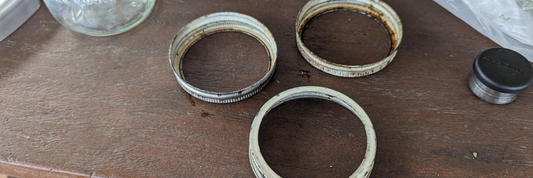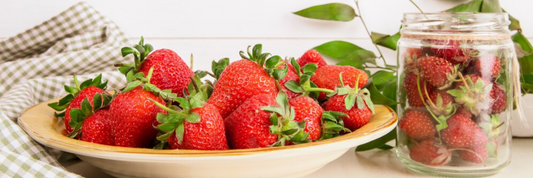Vacuum sealers are crucial equipment for preserving food, increasing shelf life, and guaranteeing proper storage. They prevent spoilage, keep food fresh, and protect it from the weather. Today's article discusses the benefits, types, accessories, and how to utilize them effectively. Whether you're a home cook or a professional business, this information can help you make better judgments.
What Is A Vacuum Sealer?
A vacuum sealer is a specialized appliance designed to remove air from sealed containers or bags. This process, known as vacuum packaging, is a highly effective method of food preservation. By eliminating oxygen, which is a primary contributor to spoilage, vacuum sealers can significantly extend the shelf life of various food items, including meats, seafood, fruits, and vegetables.

Benefits of Vacuum Sealing
Vacuum sealing offers a multitude of advantages for preserving food, enhancing culinary experiences, and optimizing storage. Here are some key benefits of vacuum sealing.
Food Preservation
- Extended shelf life: Vacuum-sealed food can stay fresh for significantly longer than food stored in traditional containers.
- Reduced spoilage: By removing oxygen, vacuum sealing prevents the growth of bacteria and mold, which are common causes of food spoilage.
- Preservation of nutrients: Vacuum sealing can help retain the nutritional value of food, ensuring that it remains rich in vitamins and minerals.
- Prevention of freezer burn: Vacuum sealing can help prevent freezer burn, a condition that can affect the taste and texture of frozen food.
Culinary Applications
- Sous vide cooking: Vacuum sealing is essential for sous vide cooking, a precise method that involves cooking food in a temperature-controlled water bath.
- Flavor enhancement: Vacuum sealing can help lock in flavors and prevent them from escaping during cooking.
- Tenderization: Vacuum sealing can help tenderize tough cuts of meat by allowing the flavors to penetrate evenly.
Storage and Organization
- Space optimization: Vacuum-sealed food takes up less space in the freezer or pantry, making it easier to store and organize.
- Protection against damage: Vacuum sealing can help protect food from damage, such as crushing or being exposed to moisture.
- Prevention of pests: Vacuum sealing can help prevent pests, such as insects and rodents, from accessing food.
- Organization: Vacuum sealing can help you organize your pantry or freezer by grouping similar items together.

Types of Vacuum Sealers
Vacuum sealers come in various types, each with its own advantages and applications. Here are two common types:
Chamber Sealers
- Commercial-grade: Chamber sealers are typically larger and more powerful, making them ideal for commercial use.
- Large capacity: They can accommodate bulk quantities of food, making them efficient for preserving large amounts of food.
- Ideal for bulk sealing: Chamber sealers are perfect for sealing large bags or containers, such as those used for storing bulk meats or produce.
Impulse Sealers
- Smaller and more portable: Impulse sealers are smaller and more lightweight, making them suitable for home use.
- Suitable for home use: They are perfect for sealing smaller bags or containers, such as those used for storing individual portions of food.
- Various bag sizes available: Impulse sealers can accommodate a variety of bag sizes, making them versatile for different needs.
Vacuum Sealer Accessories
To enhance the functionality and versatility of your vacuum sealer, consider investing in a range of accessories. Here are some popular options:
Vacuum Bags
- Various materials and sizes: Vacuum bags are available in different materials, such as plastic, nylon, and foil, to suit various food types and storage requirements.
- Reusable and disposable options: You can choose between reusable and disposable bags, depending on your preferences and budget.
Food Storage Containers
- Airtight and leak-proof: These containers are designed to be airtight and leak-proof, ensuring that your food stays fresh and protected.
- Ideal for storing liquids and delicate items: Food storage containers are particularly useful for storing liquids and delicate items that may be damaged by traditional vacuum sealing methods.
Accessories
- Hose attachments: Hose attachments can be used to vacuum seal larger items or containers.
- Can sealing kits: Can sealing kits allow you to vacuum seal canned goods, extending their shelf life and preventing spoilage.
- Vacuum sealer rolls: Vacuum sealer rolls can be used to create custom-sized bags for your specific needs.
By investing in these accessories, you can maximize the potential of your vacuum sealer and make the most of its benefits.
How To Use Vacuum Sealer?
Step by Step to Use Vacuum Sealer
Using a vacuum sealer is a simple process that can be completed in a few steps:
- Prepare the food: Ensure that the food is properly cooled or frozen before sealing. For fresh produce, remove any excess moisture.
- Choose the right bag: Select a vacuum bag that is appropriate for the size and type of food you are sealing.
- Place the food in the bag: Carefully place the food inside the vacuum bag, ensuring that there are no air pockets.
- Seal the bag: Place the bag in the vacuum sealer and follow the manufacturer's instructions to seal the bag. Most sealers will automatically remove the air and seal the bag.
- Check for leaks: After sealing, inspect the bag for any leaks. If you find a leak, reseal the bag immediately.
- Store the sealed food: Store the sealed food according to the manufacturer's recommendations. For example, frozen food should be stored in the freezer, while refrigerated food should be stored in the refrigerator.
Tips for Using a Vacuum Sealer:
- Use the correct sealing settings: Consult your vacuum sealer's manual for the appropriate sealing settings for different types of food.
- Avoid overfilling bags: Overfilling bags can make it difficult to seal properly and may result in leaks.
- Consider using reusable bags: Reusable bags can be more environmentally friendly and cost-effective in the long run.
- Clean and maintain your vacuum sealer: Regular cleaning and maintenance will help ensure that your vacuum sealer functions properly.
Vacuum Sealer Maintenance
Proper maintenance is essential for ensuring the longevity and performance of your vacuum sealer. Here are some tips for cleaning and maintenance:
Cleaning and Maintenance Tips
- Clean regularly: After each use, wipe down the interior and exterior of your vacuum sealer with a damp cloth.
- Remove any debris: Remove any food particles or debris from the sealing area and the hose.
- Clean the sealing strips: Use a soft-bristled brush to clean the sealing strips.
- Check for wear and tear: Inspect the sealing strips and other components for signs of wear and tear.
- Replace worn parts: If you notice any damage or wear, replace the affected parts to ensure optimal performance.
Troubleshooting Common Issues
- Sealing problems: If your vacuum sealer is not sealing properly, check the sealing strips for dirt or damage. Ensure that the bag is placed correctly and that there are no air pockets.
- Noise issues: If your vacuum sealer is making unusual noises, check for any loose parts or obstructions.
- Power issues: If your vacuum sealer is not working, check the power cord and ensure that it is plugged in securely.
Factors to Consider When Buying a Vacuum Sealer
When purchasing a vacuum sealer, consider the following factors:
Size and Capacity
- Consider your needs: Determine the amount of food you typically seal to choose the appropriate size and capacity.
- Space limitations: Consider the available space in your kitchen or pantry.
Sealing Speed
- Efficiency: If you seal large quantities of food, a faster sealing speed can be beneficial.
- Noise level: Faster sealers may be louder, so consider noise levels if you plan to use the sealer frequently.
Features
- Pulse sealing: This feature allows you to manually control the sealing process, which can be helpful for delicate items.
- Automatic sealing: Automatic sealing can simplify the process and save time.
- Built-in cutter: A built-in cutter can be convenient for cutting bags to the desired size.
Price and Budget
- Set a budget: Determine how much you are willing to spend on a vacuum sealer.
- Compare features and prices: Compare different models to find the best value for your money.
Conclusion
Vacuum sealers offer numerous benefits for food preservation, culinary applications, and storage. By removing air, they inhibit bacterial growth and oxidation, ensuring food stays fresh longer. With various types, accessories, and maintenance considerations, there's a vacuum sealer to suit every need. Incorporating one into your life can enhance your food preservation and culinary experiences.









